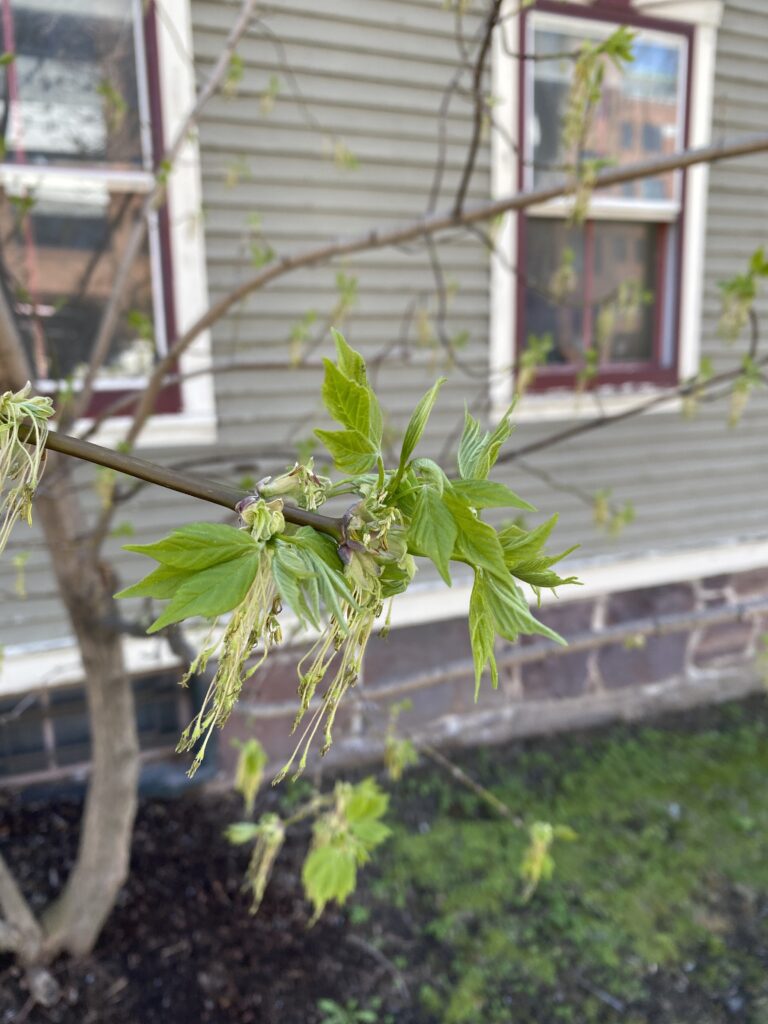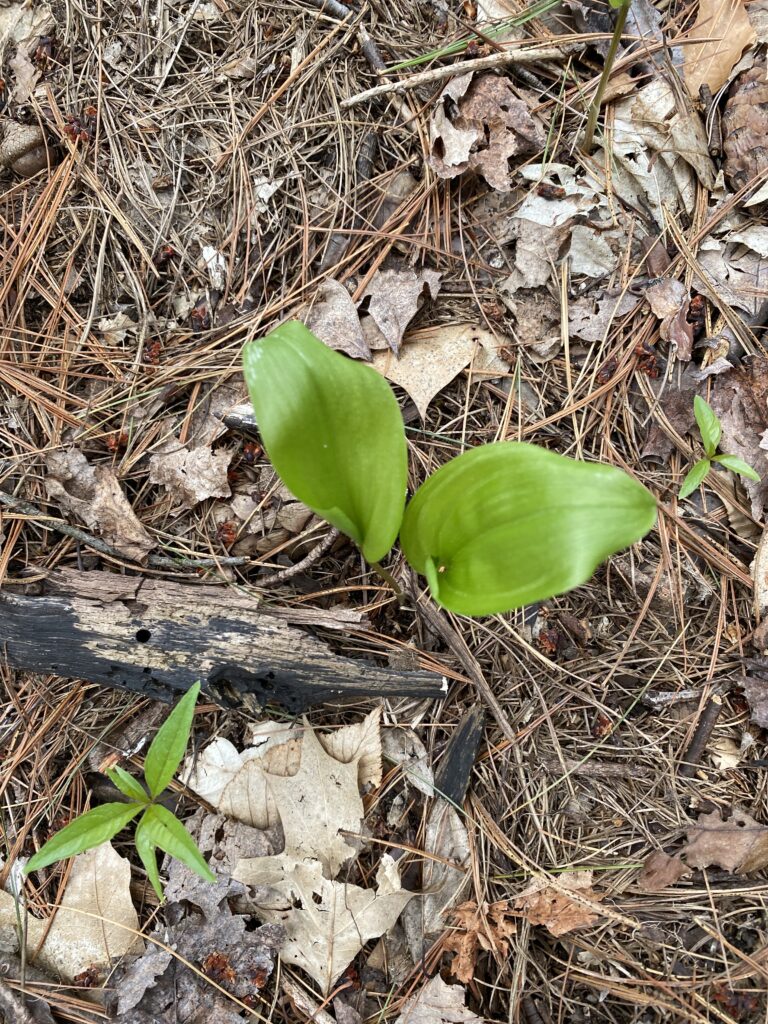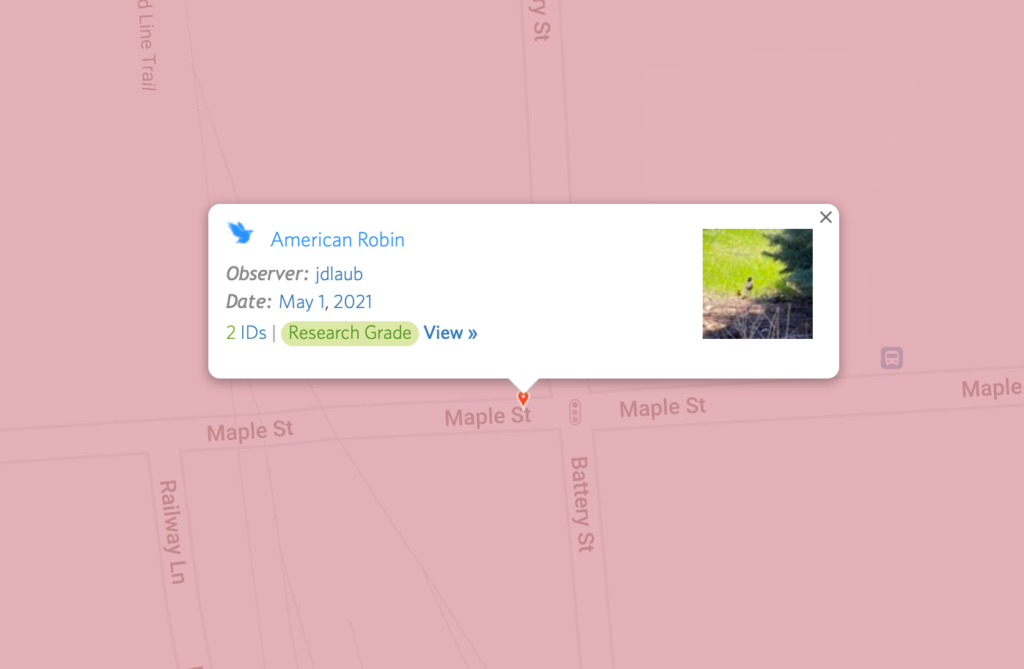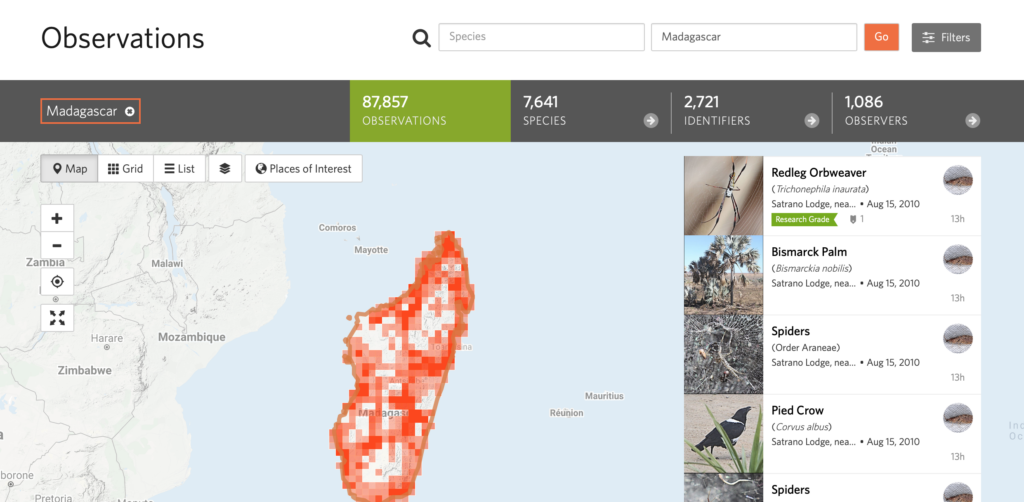During the City Nature Challenge, I went out a few times on walks to make observations. It was also just a good way to get me outside and moving, which I appreciated. One of my walks was through downtown through City Hall Park, and down to the waterfront. There I saw several bird species, including American Robins and what I believe to be a cormorant in the water. I observed some plants I hadn’t seen there before and couldn’t identify. I saw a lot of Boxelder with the dangly flowers.

It was fun to venture around Burlington and try to catch photos of birds and squirrels and such. I also ran into a group of other students going around doing it which was cool. It was an awesome thing to be a part of. It’s like Pokemon Go for City Nature.
I also went to East Woods in South Burlington. My phenology spot is there so I know the area fairly well. Usually East Woods has almost no herbaceous plants, really almost all trees. But this visit, a large area of the ground was covered in this sprouted leafy plant. It looked just like leaves sprouting from the ground, so I thought it might be a type of flower. I posted my photo to iNaturalist, and it was identified! It was Canada Mayflower. It was such a great feeling to be able to walk into the woods and immediately notice a change, and get help identifying what was growing.

I really liked the app overall. However, I wish there were more ways to identify animals without a photo or audio. I kept trying to take photos of birds that flew away, and all I had was a description. It would be helpful if there was a way to be guided to the right species.
I went on the website and I think it’s so cool that all the data is available visually and on a map. I even zoomed all the way into the map to see the pinpoint of one of my Robin sightings.

As for the global reports, what was most striking was that there was so much participation. There were over 1.5 million observers. I thought it was interesting that the U.S. and Western Europe had the highest concentrations of observations. I wonder what can be done to get more people involved around the world.
For some reason I decided to explore the Madagascar progress and they have a whopping 87,000 observations right now, and have identified over 7,000 species. I realize how biodiverse Madagascar is and how important this data coming in must be to research and conservation. I scrolled through some of the species and most are ones I’ve never seen before. It’s awesome that we live in a time where we can all add to this database and take peeks into cities’ nature around the world.

